The Black Obelisk Of Shalmaneser III – Great Assyrian Ruler
A. Sutherland - AncientPages.com - The Black Obelisk of Shalmaneser III is a limestone monument that celebrates thirty-one successful years of military campaigns by king Shalmaneser III and his prominent minister.
The Black Obelisk of Shalmaneser III, one of Assyria’s greatest treasures, was uncovered in 1854 by the British archaeologist Austen Henry Layard.
 The Black Obelisk of Shalmaneser III - Image credit: British Museum
The Black Obelisk of Shalmaneser III - Image credit: British Museum
A series of inscriptions on the obelisk are decorated with illustrations that show the ceremony of paying tribute to the king in person.
They are presented in five rows and each carved row has four panels, one on each side of the Black Obelisk. The scenes show king Shalmaneser III (858 – 824 BC) who is receiving tribute from vassals across the Assyrian empire.
The obelisk was created in 825 BC in a courtyard of the main building in Kalhu, the ancient Assyrian city of Kalhu (the Biblical Calah).
 The Black Obelisk of Shalmaneser III - Image credit: British Museum
The Black Obelisk of Shalmaneser III - Image credit: British Museum
At the time of the stela's creation, Kalhu was the capital of an Assyrian empire broken apart by civil war, so maybe it was intended to remind the king's supporters and followers of the extent of his authority and rule.
During the 9th century BC, Babylonia's neighbor Assyria enjoyed a revival of political power but abstained from encroaching on the rights of Babylonia.
In those times, Assyria had a temporary period of weakness while Babylonia was much stronger as power.
However, it is important to mention that king Shalmaneser III was the son of the famous Ashurnarsipal II, one of the great builders in Assyrian history, who took over Calah (Kalhu), and by a large construction program, he completely transformed the city to the leading metropolis in Assyria.
 The Black Obelisk of Shalmaneser III - Image credit: British Museum
The Black Obelisk of Shalmaneser III - Image credit: British Museum
King of Assyria (reigned 858–824 BC) and flourished 9th century BC and was associated with military expansion involving many campaigns on the southern and eastern frontiers.
However, his main goal was to conquer North Syria. His progress was slow though he tried to be efficient and successful. In 853 BC he fought a coalition formed by the kings of Hamath, Israel, and Damascus, but his results were indecisive. Then, in 841 BC after failing to capture Damascus itself, his forces marched to the Mediterranean coast where he received tribute from Tyre, Sidon, and Samaria.
The "Black Obelisk” (from Nimrūd, now in the British Museum) depicts“Jehu, son of Omri” bows before Shalmaneser. By 832 Cilicia had been invaded, Tarsus captured, and the region made an Assyrian dependency.
Shalmaneser’s remaining campaigns were led against Sardur I and the Mannai. The king died in 824 BC, and civil war broke out between a son, Ashurdaninapal, and his heir, Shamshi-Adad V. Shalmaneser rebuilt a palace and ziggurat at Nimrud, and his military confrontations were commemorated both on palace reliefs there and on the gates of the temple at Balawat.
Balawat is today an archaeological site of the ancient Assyrian city of Imgur-Enlil, and a modern village in Nineveh Province (Iraq).
The Black Obelisk was rediscovered in 1846 and it is believed to be the most complete Assyrian obelisk yet found in archaeological excavations. The Assyrian treasure monument became a museum object in London and gained fame for depicting an Israelite king, Jehu, mentioned in the Christian Bible.
The obelisk's richly presented details enable us to imagine the power of the Assyrian empire in the west during Shalmaneser III’s long and very successful reign.
Written by – A. Sutherland AncientPages.com Staff Writer
Copyright © AncientPages.com All rights reserved. This material may not be published, broadcast, rewritten or redistributed in whole or part without the express written permission of AncientPages.com
More From Ancient Pages
-
 DNA Identifies Historical Remains Of George Washington’s Relatives
DNA | Mar 29, 2024
DNA Identifies Historical Remains Of George Washington’s Relatives
DNA | Mar 29, 2024 -
 Stunning Images Of Shackleton’s Lost Ship Endurance Discovered Off The Coast Of Antarctica
Archaeology | Mar 9, 2022
Stunning Images Of Shackleton’s Lost Ship Endurance Discovered Off The Coast Of Antarctica
Archaeology | Mar 9, 2022 -
 Why Coyote Wanted People To Die For Their Own Good – A Caddo Nation Legend
Featured Stories | Jun 18, 2021
Why Coyote Wanted People To Die For Their Own Good – A Caddo Nation Legend
Featured Stories | Jun 18, 2021 -
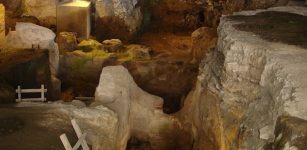 Ancient Secrets Of The Theopetra Cave: World’s Oldest Man-Made Structure And Home To Humans 130,000 Years Ago
Civilizations | May 12, 2016
Ancient Secrets Of The Theopetra Cave: World’s Oldest Man-Made Structure And Home To Humans 130,000 Years Ago
Civilizations | May 12, 2016 -
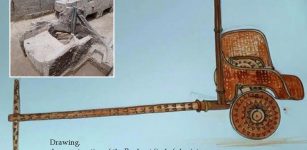 Three Bronze Age Chariots, Shields, Daggers And Decorated Coffins Unearthed In Northern India
Archaeology | Jun 7, 2018
Three Bronze Age Chariots, Shields, Daggers And Decorated Coffins Unearthed In Northern India
Archaeology | Jun 7, 2018 -
 Medieval Warhorses Were Pony-Sized And Much Smaller Than Previously Thought
Archaeology | Jan 11, 2022
Medieval Warhorses Were Pony-Sized And Much Smaller Than Previously Thought
Archaeology | Jan 11, 2022 -
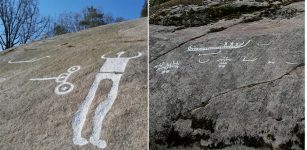 Huge Never-Before-Seen Ancient Petroglyphs Discovered In Kville, Bohuslän, Sweden
Archaeology | May 18, 2023
Huge Never-Before-Seen Ancient Petroglyphs Discovered In Kville, Bohuslän, Sweden
Archaeology | May 18, 2023 -
 The Boomerang Was Used 20,000 Years Ago By Stone Age People
Ancient History Facts | Sep 28, 2018
The Boomerang Was Used 20,000 Years Ago By Stone Age People
Ancient History Facts | Sep 28, 2018 -
 10 Viking, Norse And Icelandic Symbols Explained
Vikings | Sep 5, 2023
10 Viking, Norse And Icelandic Symbols Explained
Vikings | Sep 5, 2023 -
 Ancient Medical Machine Ahead Of Its Time Hidden In Emperor’s Temple – Secret Science Knowledge Examined
Featured Stories | Apr 20, 2018
Ancient Medical Machine Ahead Of Its Time Hidden In Emperor’s Temple – Secret Science Knowledge Examined
Featured Stories | Apr 20, 2018 -
 Why Was Louis XIV Called The Sun King?
Ancient History Facts | Jul 11, 2019
Why Was Louis XIV Called The Sun King?
Ancient History Facts | Jul 11, 2019 -
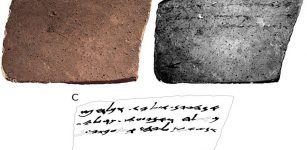 Unseen 3,000-Year-Old Inscription On Biblical-Era Piece Of Pottery Deciphered By Researchers
Archaeology | Jun 21, 2017
Unseen 3,000-Year-Old Inscription On Biblical-Era Piece Of Pottery Deciphered By Researchers
Archaeology | Jun 21, 2017 -
 Jason And The Argonauts – Hate, Sorcery, Love And Jealousy Reign In This Famous Greek Story
Featured Stories | Jan 6, 2022
Jason And The Argonauts – Hate, Sorcery, Love And Jealousy Reign In This Famous Greek Story
Featured Stories | Jan 6, 2022 -
 Fossil Study: Coelacanths Thrived In Switzerland After A Mass Extinction
Fossils | Jul 28, 2023
Fossil Study: Coelacanths Thrived In Switzerland After A Mass Extinction
Fossils | Jul 28, 2023 -
 Mystery Of The Lost Beverina Castle – Did Knights Templar Know Where It Was?
Featured Stories | Jan 21, 2018
Mystery Of The Lost Beverina Castle – Did Knights Templar Know Where It Was?
Featured Stories | Jan 21, 2018 -
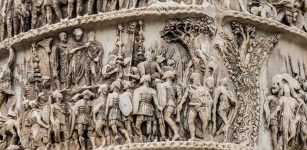 Impressive Column Of Emperor Marcus Aurelius – War Monument From Ancient Rome
Featured Stories | Jul 6, 2017
Impressive Column Of Emperor Marcus Aurelius – War Monument From Ancient Rome
Featured Stories | Jul 6, 2017 -
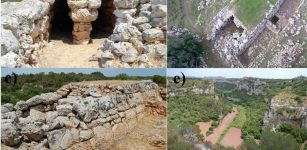 Eating And Social Habits Of People In The Balearic Islands 3,000 Years Ago – Reconstructed
Archaeology | Jan 18, 2023
Eating And Social Habits Of People In The Balearic Islands 3,000 Years Ago – Reconstructed
Archaeology | Jan 18, 2023 -
 On This Day In History: Great Sheffield Flood – Largest Man-Made Disaster Occurred In England – On Mar 11, 1864
News | Mar 11, 2017
On This Day In History: Great Sheffield Flood – Largest Man-Made Disaster Occurred In England – On Mar 11, 1864
News | Mar 11, 2017 -
 Ancient Cave Church Complex In Basarabi, Romania
Civilizations | Dec 11, 2018
Ancient Cave Church Complex In Basarabi, Romania
Civilizations | Dec 11, 2018 -
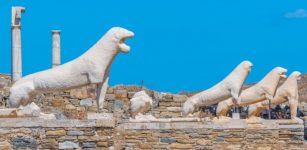 Archaic Marble Lions On The Sacred Island Of Delos
Artifacts | Feb 27, 2021
Archaic Marble Lions On The Sacred Island Of Delos
Artifacts | Feb 27, 2021

